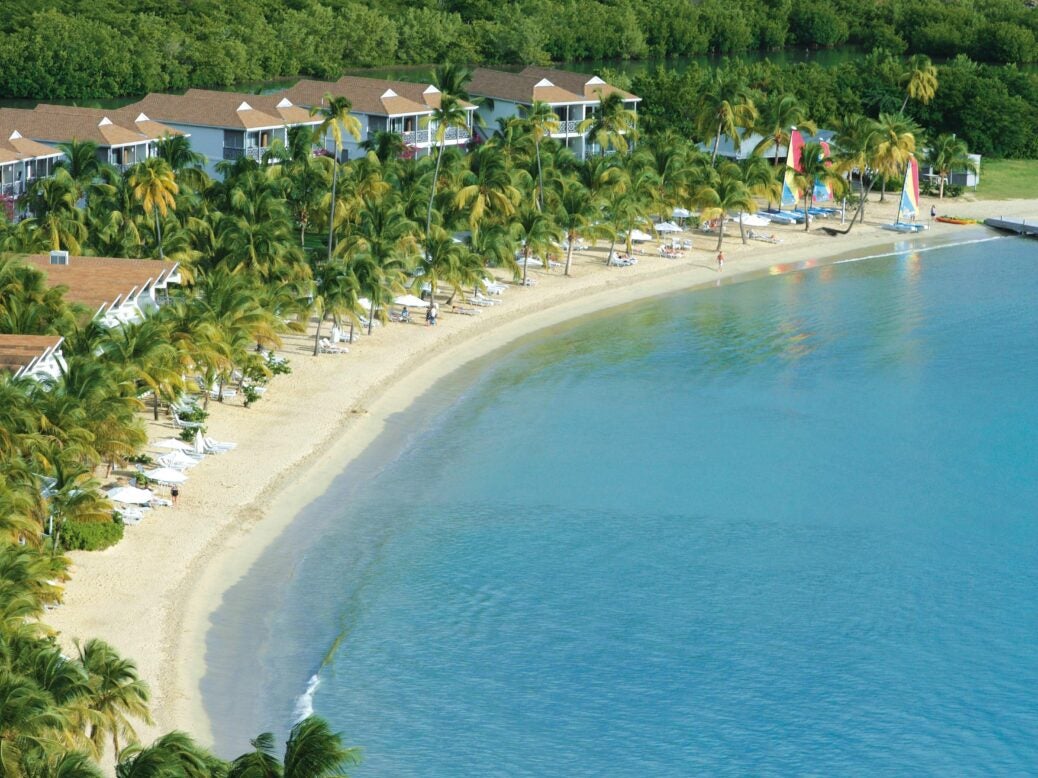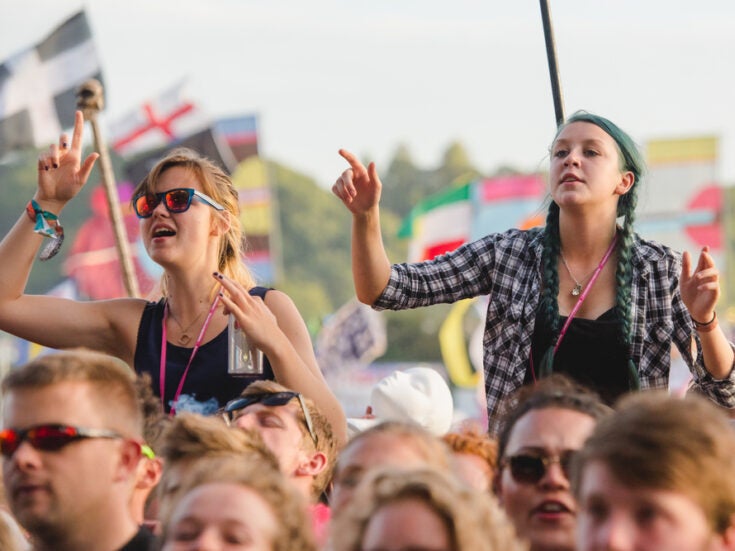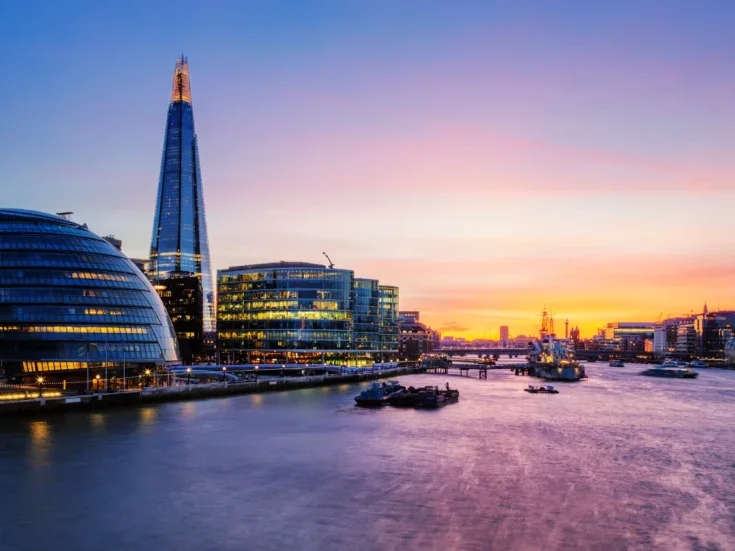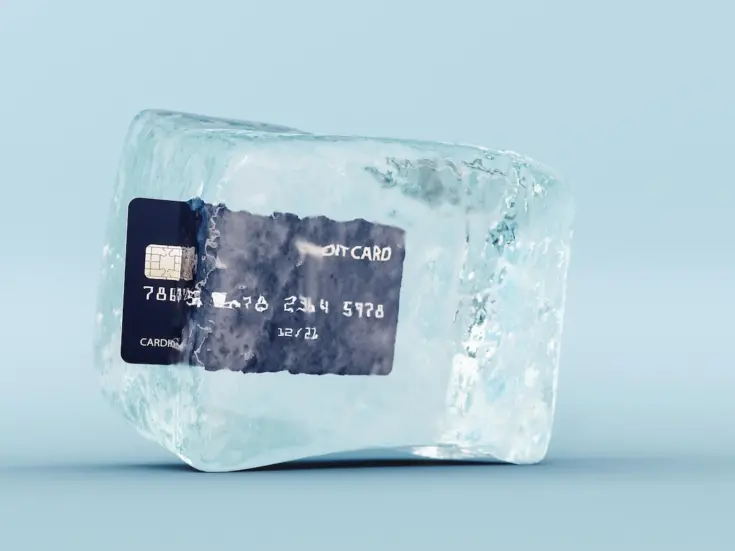
Antigua has all the idyllic credentials of a Caribbean island — but beyond the beaches lies a cultural and historic treasure trove, writes Jo Caird.
‘Put out your hand,’ says tour guide Ernest Laudat, reaching beneath my kayak to the muddy seabed of the mangrove forest, plucking a sea cucumber from among the roots and placing it, with some ceremony, on my outstretched palm. This scene might not be exactly what springs to mind when you picture a break in the Caribbean, but it turns out that Antigua has a lot more going for it than just those holiday-snap staples of white sand and sparkling blue seas.
I left my south-coast resort, Carlisle Bay (whose sweeping curve of beach and waving palm trees couldn’t be more postcard perfect if they tried), after an early breakfast to reach the headquarters of Antigua Nature Tours in the north-east corner of the island. After a twenty-minute journey in a flat-bottomed boat out into the North Sound Marine Park, Laudat helped me into a kayak moored at a floating dock in the heart of the mangroves, and off we went.
Carlisle Bay wasn’t exactly swarming with people this morning, but the marine park is something else entirely: silent, still and totally deserted. We paddle around in the shallows, Laudat explaining the mangroves’ crucial role in protecting the island from wind and swell off the Atlantic; catching sediment run-off so it doesn’t harm the reef; and as a nursery for fish before they make their way out into the big bad ocean. He clearly knows his stuff, deftly handling a cassiopea, or upside-down jellyfish, without getting stung so I can look at it up close.
Next up is snorkelling in the clean, clear water off Great Bird Island, an uninhabited spit of jungle-covered rock lying almost 3km off mainland Antigua. Having moored up on picturesque North Beach and hiked the short distance to the summit of Great Bird peak, I’m disappointed not to spot a rare Antiguan racer snake (the tiny island is one of its only known habitats), but the frigate birds riding the thermals far above me are a sight for sore eyes.
The adventures continue the following day, albeit much closer to home, on a hike through the rainforest that cocoons Carlisle Bay. It’s another early start, but a necessary one — it’s only 8am and the temperature is already pushing 30°C as I start my climb through the trees.
My guide, Elliot Michael, one of the gardeners at Carlisle Bay, has ten years’ experience leading walks from the hotel. Clearing the edges of the path ahead of us as we go (not with a machete, as I had expected, but with an ordinary pair of gardening secateurs), he tells me about the flora and fauna, from the bizarre-looking ‘nurse’ plants, whose antibacterial sap is used locally to treat minor wounds, to acacia, introduced to Antigua in the 17th century as a fuel for the colonial sugar-cane industry and now rampant across the island, untroubled by predators.
The view, when we emerge on to a narrow path running along a grass-covered clifftop, is shockingly gorgeous after the darkness of the jungle trail. We descend to a beach strewn with dead coral, crunch our way along it, then plunge back into the rainforest, climbing once again. Finally we reach Rendezvous Bay, an empty curve of sand pockmarked with sea turtle nesting holes and mongoose footprints. I can’t get into the sea fast enough after the exertions of the morning, a glittering cornetfish my only companion as I bob about in the waves.
Michael’s mention of the sugar-cane industry makes me realise that I’ve so far seen barely any sign of Antigua’s colonial past. Keen to remedy this situation, I head to Redcliffe Quay in St John’s, the island’s petite capital. Once a waterfront trading area for the slaves, rum, sugar and coffee making the journey between Antigua, Europe and Africa, it’s now a picturesque shopping district with a handful of restaurants and bars.
After lunch on the terrace at Big Banana, an island institution popular with both locals and tourists, I go on the lookout for some heritage. There are a few old buildings here, mostly dating back around 100 years, but it’s hard to get any sense of the history of the place from such slim pickings.
Much more is made of the past at Nelson’s Dockyard, home to the British Navy from the early 17th to the late 19th century. Information boards scattered around the Unesco World Heritage Site offer nuggets about the beautiful Georgian buildings that once served as storehouses, offices and workshops to support the British fleet in the Caribbean. In the old-fashioned but rather charming Dockyard Museum, located in the former Admiral’s House, I learn about the indigenous people of Antigua and Barbuda, the colonisation of the islands by the English in the 16th century and the history of the dockyard itself.
There’s another restored building from this period up at Shirley Heights, on the other side of the bay from the dockyard. What was once a military lookout and gun battery is now a lovely spot for a drink overlooking English and Falmouth Harbours, arguably the prettiest view in Antigua. The rest of the complex up here is yet to be restored, but strolling around the ruins of the officers’ quarters, magazine, hospital, canteen and barracks, I’m struck by the once massive scale of the British naval presence on this small island.
It’s at Betty’s Hope, a former sugar-cane plantation on the eastern side of Antigua, that I gain some real insight into the industry that made the island such a valuable asset for the British. The plantation was once the biggest on the island, employing hundreds of slaves brought over from Africa and earning huge sums of money for the family who ran it, who also happened to be governors of the Leeward Islands at the time.
While most plantations had just one windmill for crushing sugar cane — I spot the ruins of these structures as I make my way around Antigua — Betty’s Hope had two, one of which has been restored. It takes a bit of imagination to picture life here when the plantation was up and running — aside from the overhauled windmill and a few signboards there’s not much else to the site — but the tiny interpretation centre offers an effective, not to mention harrowing, account of conditions for the slaves of Betty’s Hope.
Noting my interest in the grimmer side of Antigua’s past, my driver suggests a stop at a nearby coastal rock formation before heading back to my resort. Slaves from neighbouring sugar estates used to run away to this bleak, sun-bleached spot and throw themselves from the natural limestone bridge into the roiling pool below, he explains. Infamous as a place of suicide — a sin against God according to Christianity — it became known as the ‘Devil’s Bridge’ and bears the moniker to this day. It’s a mercilessly hot afternoon, but looking down into the pool and listening to the waves roar through the limestone channels beneath my feet, I’m chilled by the thought of all the desperate lives that met their ends here.
I spend the final day of my trip indulging in some more typical Caribbean holiday pursuits — reading in a hammock, swimming, a massage at the spa at Carlisle Bay — before returning to Nelson’s Dockyard for ‘Seafood Friday’ on the quayside outside the Copper & Lumber Store Hotel.
Held weekly for the past five years or so, these suppers have become a proper island tradition, a favourite with locals, tourists and expats alike. Queuing up for a plate of barbecued lobster with salad, corn, and rice and beans amid the Georgian splendour of Nelson’s Dockyard, I reflect on how much I would have missed this week if I’d have done as so many do and not budged from the beach. There’s a lot to Antigua, if you’re prepared to go looking for it.







